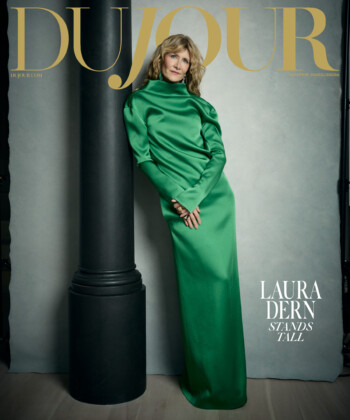By the time The Carol Burnett Show ended its 11-year run in 1978, the weekly variety hit had won 25 Emmy Awards and made comedy icons of many previously unknown stars. And while what happened on-camera has been pored over by millions of devoted viewers, what went on behind the scenes was never public record—until now. “I’ve been approached by other authors who wanted to write about my show,” Burnett says, “but I figured I should write it because I was there.”
And so she did. In Such Good Company, Burnett’s smart, illuminating and—of course—very funny new book recounts her struggles to bring the series to air, analyzes what made the show so successful and dishes on the dizzying cavalcade of stars who made guest appearances, from Lucille Ball and Bing Crosby to Rita Hayworth. Still, as the handwriting sample above professes, Burnett tries to keep a level head about her success.
“I heard that in a yoga class years ago, and I thought, That’s terrific!” she recalls. “It means if you get a bad review, don’t be troubled by it. And if everybody just loves you, be untouched by that and don’t let it go to your head. In other words, this too shall pass—so just get over it!”
According to graphologist Annette Poizner, Burnett’s handwriting underscores this very idea. “Celebrity handwriting often shows dramatic embellishments; fame acclimates a person to being on show and therefore there is a drive to embellish,” Poizner says. “In this handwriting, there is none of that. In fact, this script could be called rather conventional, indicating somebody with classic tastes who is down to earth.”
Poizner might say that reliability is what has kept fans flocking to Burnett for all these years, though the comedy legend herself has a somewhat different take. “People ask why The Carol Burnett Show is still popular, and I think it’s because we were never really topical—we just went for the belly laugh,” she explains. “The only thing that would really date us is the way we looked. But as far as the sketches and the musical numbers go, they hold up today. And I’m really proud of that.”

Handwriting sample from Carol Burnett
1. See how carefully she shapes numbers: She has aptitude for numbers and a head for finance. Notice how she puts the date at the top of the correspondence. The convention when penning a correspondence is to follow that norm, but if one is mindful of being a celebrity, then one does not follow convention. It wouldn’t occur to her to leave off the date! In other words, she has achieved psychospiritual maturity.
2. The writing is legible, because she wants people to be able to read it. She is conscious of details and wants to get things right.
3. Look at how the T is crossed with an arcade. That little umbrella connotes an interest in form, an awareness for appearances and a commitment to poise.
4. Note the sharpness in some letters. See the N in “untroubled” or “in.” Sharpness in writing shows somebody with a clear mind and strong analytical skills.
Photo: Getty Images






































